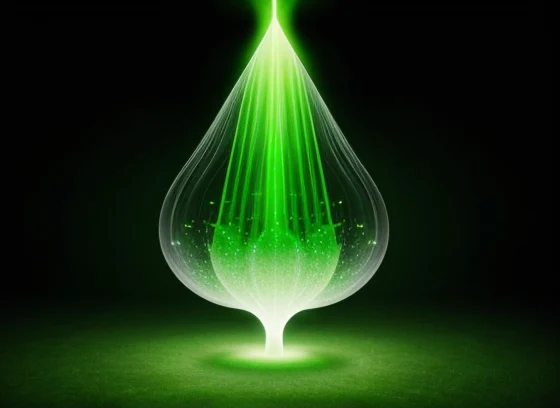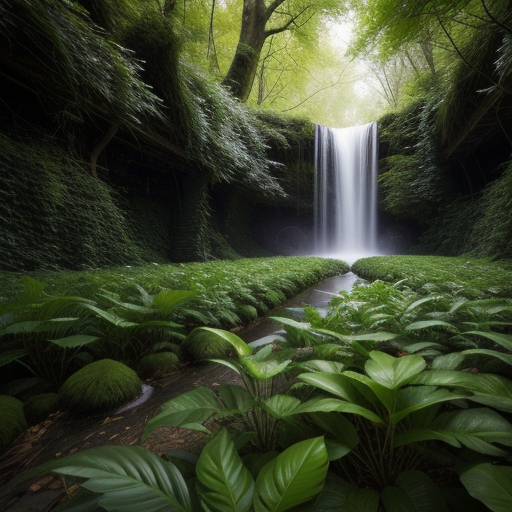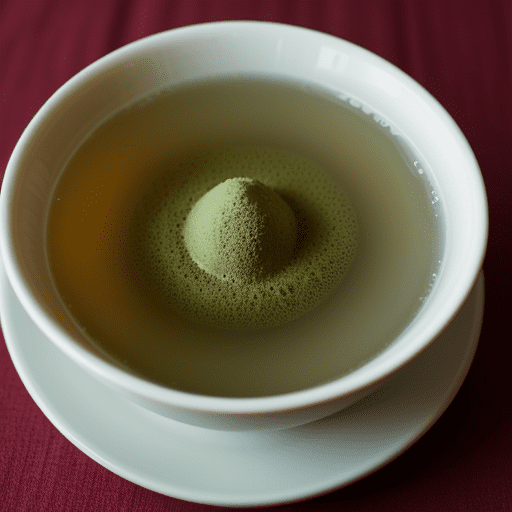The Surprising Benefits of Green Grass for a Healthy Environment
We tend to forget the role of simple, seemingly ineffable green grass In environmental welfare. Although often only considered a part of pretty landscapes, green grass is actually also an important source of support to keeping the ecological balance. But this simple detail is responsible for numerous environmental knock-on effects through its existence in ecosystems as well as urban and domestic settings. If we discover the countless benefits of green grass, it is easy to see how and why this plant works well beyond being an elegant touch.
This is also a good way to lead into an argument about how green lawns help fight climate change, save water, increase biodiversity and even benefit mental health. Having urban trees helps to cool the atmosphere, soak up pollution and improve individual community health. So, exploring more about these advantages merely makes a point that green grass is an essential natural asset and must be maintained and grown with utmost care.
Environmental Benefits of Green Grass
Green grass provides many environmental advantages that are vital to a greener and healthier ecosystem. On the other hand one of its main benefits is that it sequesters carbon and CO2e, thus reducing the impacts of climate change by absorbing atmospheric C through photosynthesis and storing some in the soil. Grass lawns and other surfaces also act as natural filters in the air — dust, pollutants, and allergens become trapped by blades of grass while oxygen levels rise.
It helps a lot in protecting the soil from erosion and grass also plays an important role. Its roots stabilize the soil, which prevents erosion and reduces run-off of valuable topsoil needed both for farming to maintain productivity levels and that will transport fine sediments into water bodies. In addition, the biodiversity of grasslands provides habitats for many organisms from insects and birds to small mammals.
Additionally, a grass providing its terms of water management: increased groundwater recharge and decreased surface runoff. They act as a natural sponge soaking up rainfall, which reduces urban flooding and they filter contaminants before it enters the water bodies. Together, these advantages reinforce the importance of green grass in creating a better sustainable and resilient environment.
Carbon Sequestration
One relatively unheralded sphere of carbon sequestration — the capture and storage of atmospheric carbon dioxide (CO2) — functionally plays out on a lush green meadow. When grass photosynthesis, to absorb carbon dioxide into oxygen and organic compounds of carbon (net trapping greenhouse effect purpose). This carbon is being immobilised into the soil not just in the grass blades, but as much if probably more extensively via root systems and other surrounding areas. Long-lasting root systems typical of healthy grasslands and lawns are a major source for soil organic carbon. The sequestration of carbon in the soil helps to mitigate climate change because this storeroom then acts as a sink for CO2 — it actually removes CO2 from the atmosphere.
Grass areas also have a nice influence on the soil structure because they prevent erosion, which yet again enables more stable carbon to accumulate in the soil. Green Roof Parks Recreational Areas Managed Grasslands Nature and Biodiversity-based Solutionsclimate Change Adaptation Human health, of course, is also greatly reliant on the environment and its sustainability — so by illustrating how green grass could and should be more attractive than bare soil for carbon sequestration purposes in an educational manner further ecological well-being can potentially become part of rather elementary landscaping/conservation.
Oxygen Production
Though this is an impressive attribute, it also overlooks the fact that one of the remarkable and sometimes neglected value propositions to having green grass on earth is making its substantial contribution toward oxygen production — which consequently helps ensure life can be sustained. A major player in the game is grass, taking carbon dioxide from the atmosphere and using sunlight to turn it into oxygen (a byproduct we all know) as well as glucose( a tasty treat for fungus). A typical, well-cared-for lawn area of about 2,500 square feet environs can create enough oxygen to be sufficient for a family of four. Grass in effect acts as a carbon sink, and because it continually sequesters CO2, grass also serves to reduce global warming while benefiting air quality. In addition, this increased oxygenate process advocates for biodiversity by housing habitats with clean air that also forms a large percentage of the overall land. And so the green grass in rural as well urban landscape offers a solution that is natural and environment friendly, which acts as an instant oxygen tree for unhealthy atmosphere promoting eco-system health at large.
Erosion Control
Healthy environment cannot be confirmed without green grass protecting us from erosion control. Their root system is intricately designed, which helps to secure the soil preventing it from getting displaced naturally by wind or heavy rain. This natural stabilization is key in keeping land surfaces from degrade and decreasing the loss of specific topsoil (the fertile layer) that has plant growth minerals necessary to many planting activities. Moreover, grassy cover slows down water speed during heavy rains to let more time for the ground to absorb the excess and less volume of what is running-off.
Similarly, grass cover on the sides of hills and slopes reduce danger when it comes to landslides since no vegetation can only worsen the thing. Green lawns and parks often bring a host of ecosystem services along with them, like reduced stormwater runoff (and thereby lower flood risk), as they can allow water to infiltrate rather than simply run over the land surface. As a result, green grass is not only an aesthetic option but also serves as fundamental environmental management that underpins soil health and water balance for broader ecological maintenance.
Temperature Regulation
One of the many wonders is how green grass can keep a comfortable environment by regulating temperature. Especially in urban areas, where concrete and asphalt surfaces dominate, grass fields/lawns are important for temperature moderation. These hard surfaces absorb and trap heat, resulting in an ‘urban heat island’ effect which makes city temperatures a great deal higher than those of the surrounding countryside. Green grass, on the other hand, has a cooling effect thanks to its ability to transpire — that is taking in water through roots and releasing it as vapor through leaves. This naturally occurring process serves to lower the air temperature in surroundings of grassy terrain. On top of this, grass also bounces back lots of sunlight compared to dark black surfaces like concrete and pavement helping keep things cooler. This makes neighborhoods with higher greenery have cooler temperatures, less need for air conditioning and an overall more comfortable living experience. Green grass such as this is needed to help create a better urban environment.
Support for Local Wildlife
Imagine if the local park was just concrete, that would not offer any support to wildlife at all a green lawn is absolutely incomparable in terms of biodiversity and its ability to sustain species. A well-tended lawn or meadow becomes a refuge for millions of insects, birds and tiny mammals. Whether we realize it or not, with the flowers and plants near grassy areas especially are sustenance for crucial pollinators such as bees and butterflies. These, in turn bring on the birds that eat them and further enriches both flora and fauna.
Thick grass furthermore provides a refuge for ground-nesting birds and small creatures such as rabbits or hedgehogs that seek protection from predators, wind whipped weather conditions among other hazards. Grass root systems also contribute to soil stabilization and health, which in turn supports the growth of beneficial microorganisms and worms which will improve soil quality; essential for a basis of diverse plant life. So green grass is more than just good looking, but an essential part of a healthy living system that sustains the extensive local wildlife.
Habitat Creation
Grass cover creates habitats for a huge variety of wildlife and is, as we now know so important to the good health of our environment. Grassy spaces like lawns, parks and fields can offer a safe haven for innumerable tiny creatures that crawl or wriggle across the earth on six legs (or no more than 200). The lush, tall grass that covers the dunes is extremely beneficial for corkwing wrasse as it allows them to avoid predators and survive in extreme weather. Grassy areas help in promoting pollinators like bees and butterflies, which are vital for plant reproduction and biodiversity. Moreover, the grass root systems filter pollutants in water providing purely clean(er) quality water for aquatic life (fish and insects that depend on our waters). Green grass provides food and microhabitats for a host of species, supporting complex food webs that help the good guys prosper so they can control pests in an entirely organic manner while preserving biodiversity.
Food Source
Trims of green grass is more than a carpet that bedecks the landscape; It forms an important part in our food chain and serves as a principal source for several species to feed on. Grass is the diet of small insects and even large mammals such as cattle, deer, sheep which are herbivores. This healthy food is filled with carbs, proteins, and vitamins which make your pet grow faster.
Grassland, with the haunts of herbivores such as bison and cattle defined by abundant grasses accompanied by numerous other plants. As they graze, not only are the vegetation balanced out but their constant manure also allows for natural fertilization of the land that further facilitates healthy and sustainable soil health. Therefore, the improved quality of soil will have high potential for water storage and is beneficial in agricultural productivity enhancement. While eco-functionally speaking, if human food is distant related to green grass, it will support wider picture of totalfoodsafety and ecosystem balance.
Shelter for Small Creatures
The biodiversity and ecosystem balance are ever furthered by the provision of essential shelter to thousands upon thousand small creatures. Therefore, dense grass mats thousands of years ago provided a better hiding place for insects, spiders and other invertebrates so they would survive to reproduce. Ground bees are vital for natural soil aeration, and their pollination services help shape the overall ecosystem functioning while supporting the food chain to provide sustenance for local birds and small mammals.
Furthermore, grass roots serve to stabilize the soil — helping keep it in place rather than washing away via erosion— but also provide a microhabitat for nematodes and earthworms who undertake nutrient cycling that benefits both itself as well as belowground life. Thick grass also hides ground-nesting birds and small mammals, giving them protection from larger predators as well as materials to nest with in the spring.
In essence, the green obvious plays the role of a living blanket promoting and maintaining one complex cycle as well as mini web on life altogether; integral for keeping an ecosystem robustly dynamic.
Enhancing Biodiversity
One of the wonderful benefits to keep green grass healthy in environment resides on helping biodiversity weirder. Green turfs and lawns provide crucial space for a plethora of organisms such as insects, birds and small mammals. These are vast areas of green in the landscape which provide food, nesting and refuge to many different types of life. Making beneficial and attractive habitats is also simple such as maintaining well-manicured grass that attracts earthworms, which aerate the soil and recycle nutrients for plant growth (and insect life). Grasslands also provides flowers and seeds that allure pollinators such as bees, spiders, butterflies etc. for the better pollination of plants. Ecosystems with high species diversity are less likely to collapse when stressed by external change, because the presence of a broad variety of organisms fills many different ecological niches. Maintained as grasslands, they also maintain genetic variability that is important for the ability to adapt under changing climatic conditions The minute you attempt to keep a lawn, either alone or in cooperation with Mother Nature), your land becomes part of an ecological network.
Physical and Mental Health Benefits
Green Grass supports physical as well as mental health, leading to a positive effect on one’s overall expression of life. Grass-covered areas are soft, which means that you will need to walk or jog on them (it is impossible due of the physical aspects,) and playing games like soccer football outside also encourages cardiovascular heart health. It also catches dust, pollutants and releases oxygen which us important for our lung’s health. In addition, well-kept grass can lower temperatures in cities in general and therefore cool off the climate—which all come with benefits of reducing heat stress.
Green grass areas are a psychological tonic for stress and anxiety. Spending time in the wild has been scientifically proven to decrease cortisol levels and elevate mood. Seeing a beautiful green lawn, as you know: awakens soothing feelings and allows your stress-filled head to holidays. Parks and gardens with grass in addition to increasing social interaction also improves the community bonding which is necessary for emotional wellness. In other words, green grass is simply key to better health both in body and mind.
Stress Reduction
This includes reduced stress and improved mental health, stemming from something as simple as living on grass instead of toxic chemicals in the earth. This oasis of green, peaceful grass can create bubbles of calm that penetrate the grinding stress and anxiety prompted by our hour-to-hour reality. It Stimulates the Senses Connecting with natural greenery lowers cortisol levels–the stress hormone! “Earthing,” or walking barefoot on the grass, has been documented as one of many physiological recovery processes that connects your body to earth’s electrons promoting stress reduction and increased positive feelings. What is more, green grass leads to cooler environments (reducing the urban heat island effect) and helps create comfortable areas for rest or recreation. Offering an easy and practical way to reduce stress, the calming natural substance can promote relaxation of body and mind for mental well-being in a restful quality life. By keeping lawns as lawn sward or pièce de résistance, communities can provide a nearby accessible green respite from modern stresses.
Encouraging Outdoor Activities
Green grass facilitates outdoor play, which has huge consequences for health; it is enormously important in so many ways. Further protection comes from the provision of large green lawns and parks for physical training, part simply nature – something which is most vital if we are to combat sedentary lifestyles that lead obesityand various forms cardiovascular disease. Filling the green spaces is essential as they tend to become social hubs where communities come together for group activities like picnics, sports and outdoor events. The non threatening environment of green places is perfect for mental health and increases relaxation which lowers the chances of anxiety, depression,and stress. In particular, the way children play with areas of grass is especially effective and helps to foster creativity as well physical development. Lush, green grass adds aesthetic appeal that could lead to more outdoor activities and create a healthier lifestyle for the community.
Improvement of Air Quality
Greenness, the green grass will greatly affect air quality helps keep it fresh. Grass takes carbon dioxide from the air and releases oxygen, to sustain life. A properly established lawn acts as a natural air filter capturing dust, smoke and other airborne pollutants thus reducing those substances from being in the atmosphere we breathe. Grass can also help combat the urban heat island effect by cooling down cities as it cools air temperatures via transpiration, whereby grass releases water vapour into the atmosphere lowering daytime highs. The cooling can also help to reduce the requirement of air conditioning and hence, lesser production of greenhouse gases due to energy. At first, it is useful for character since green grass enhances the ambiance take after that battles with air toxins and supports decent living conditions.
Noise Reduction
We may not realize, but the green grass is playing a part in reducing noise sound as it acts as soft absorber of sound over there. This dense network of blades, in addition to the nature-like soil underneath it disrupts and scatters all sound waves which diminishes total noise pollution. Especially in metropolitan regions, grassed areas like parks and lawns reduce the prevalent buzz of cars, building work along with market — thereby giving peace-and-quiet surroundings. Studies demonstrate that grass and other greenery can decrease natural sound levels by as much as 10 decibels, influencing the personal satisfaction for tenants since this ambient noises will make us quieter in our brains causing both mental and emotional relaxation. Still, the grass does help: by dissolving sound wave patterns and preventing them from rebounding off hard surfaces. Additionally, acoustic insulation that occurs in this natural way is both eco-friendly and also more cost-effective than all those synthetic soundproofing methods you may have heard before such as using a lot of foam to block noise which will create an unpleasant environment for your health.
Water Management
One of green grasses lesser known benefits is the contribution it makes to water management. Because roots are deep, healthy grass lawns can work as a natural sponge to more effectively increase the absorption and retention capacity by soil. This is especially useful in cities where much of the landscape has been replaced with impervious surfaces such as concrete and asphalt, which tend to quickly shed water downstream. Grass roots form pores in the soil to move water through quickly for fast infiltration and surface runoff reduction. This, in effect recharges the groundwater aquifers that provides continuous water supply for human consumption and ecological purposes. Additionally, because lawns have root systems which hold the soil in place – thereby preventing erosion and that loss of valuable topsoil every time it rains hard. Through the interception and slow release of rainfall, green blades of grass reduce flash-flood risks while maintaining soil moisture in balance to support a healthy hydrologic cycle that ensures resilience within an ecosystem.
Rainwater Absorption
There is no point of denying the fact that green grass makes rain water get absorbed which ultimately become a contributor for healthy environment. The grass and its root system under this produces a sponge like property…as when it rains, the ground catches or holds onto that rain. In the face of heavy rainfall, it helps reduce runoff and soil erosion,water pollution. The roots of the grass anchors soil and makes channels for rainwater to percolate more deeper in land.
And such absorption refills ground water which are key in event of the maintaining a water table and delivering continuous fresh on order to plants restaurants for…. → READ MORE: Why Soil Conservation Is Important Green grass also helps to mitigating the risk of flooding in urban areas by preventing excess rainwater from overloading storm water systems. The soil also acts as a filter and traps pollutants in the water, therefore making it filtration cleaner by removing many synthesized chemicals from the environment. Green grass beautifies landscapes and provides important ecological functions necessary to the ecosystems that make up our sustainable environment.
Reduction of Runoff
Less runoff: Finally, some very significant environmental benefits of green grass come from the reduction in runoff. Grass functions as a natural sponge, soaking in any rain and then slowly percolating it down through the soil instead of simply running off the surface. By doing so, this infiltration reduces the amount of stormwater that can exceed drainage systems capacity resulting in flood and erosion. Grass slows the flow of water, allowing it to seep in and replenish underground aquifers thus maintaining the water table so that we get plenty of groundwater.
Healthy grass, rooted in the soil through its root system, also helps prevent erosion and topsoil loss during heavy rains. This, in turn protects water bodies from sedimentation hence all the associated pollutants that runoff is likely to carry such as fertilizers and pesticides. Importantly, the decrease in runoff caused by healthy turf ecosystems truly benefits the environment by assisting with improved water management and soil health while improving our watershed.
Groundwater Recharge
One of the essential environmental benefits that come with a lush green grass is groundwater recharge. In grasslands, infiltrated rainwater is quickly absorbed by the dense root systems of healthy grasses: this means that water percolates into soil and not out storm drains or river. This is known as the recharging of underground aquifers, which constitute vital reserves for agriculture and other industrial demands. The importance of grass is that it can act as a natural filter and remove particulate debris from water, returning clean soil to the environment. In urban environments, where impervious surfaces such as concrete and asphalt cover the land surface, well-maintained grassy turf spaces can play a major role in preventing damage from unmitigated stormwater runoff by reducing the risk of flooding and soil erosion. Through the recharging of groundwater, green grass not only supports plant and animal life in the local ecosystem but contributes to water security for human communities as well; thus rendering itself an intrinsic part of a healthy environment.
Filtration of Pollutants
Another important property of green grass is purification, the potential to absorb pollutants from air and water — a compulsory variant for preserving environmental purity. Finally, grass serves as a kind of organic air filter; it can trap nearly 12 million tons of dust and dirt from the atmosphere every year. The plant has a large root system which, in many cases takes hold of the earth so as to retard runoff during rainfall. This process enables the soil to retain pollutants such as heavy metals, pesticides and chemicals from being exited into natural water bodies like rivers and lakes. Certain grasses go even further, breaking down toxic substances with the help of microbes in the root zone. Green grass also helps to filter and hold back polluted waters, reducing the volume of toxins dispersed which this reduces added burden on municipal water treatment systems resulting in safer cleaner ecosystems. It not only helps in pollutant filtration but also the augmented resilience of ecological balance.
So what have we concluded?
So, ultimately we can say that green grass benefits in a healthy environment are way more than the beauty of it. It is helpful in cleaning the air bridging dust, pollen and remaining particles with releasing oxygen as a result for better air quality. By transpiring and moderating the temperature, it enables to provide cooler microclimates which reduce urban heat island effect as well; decreasing energy consumption. These deep root systems build and create soil health, arresting erosion and filtering water for an improved sustainable eco system. A meadow also promotes biodiversity by sheltering and sustaining an array of species with habitat, food sources that fuel ecological resilience. But, it can not be underestimated too that green pockets provide psycho-social value in the form of mental well-being and better life quality to park users. Whether we establish or continue to expand and maintain more grass-covered areas, using them in this way is utilizing all the various aspects of what keeps them advantageous; ultimately promoting a healthier environment for those that follow after us.





